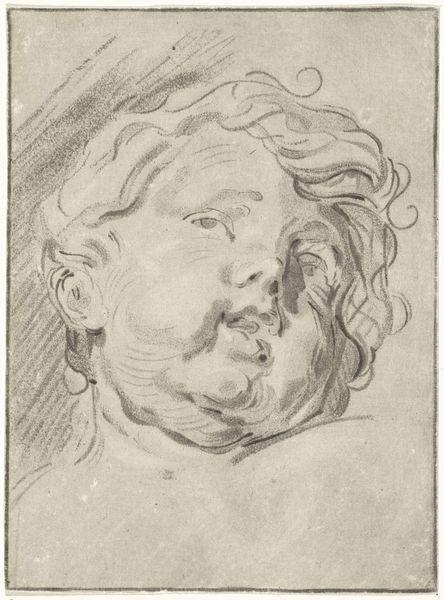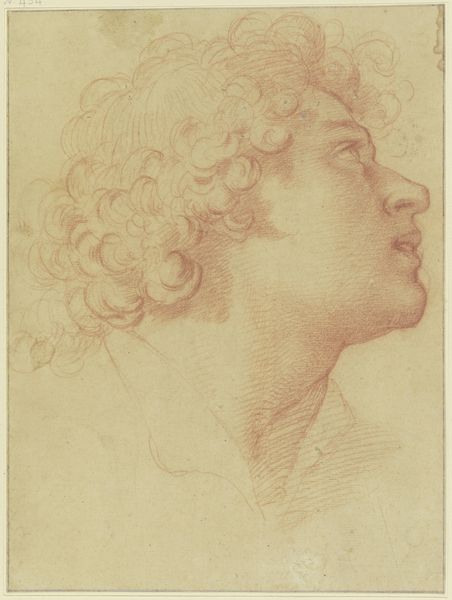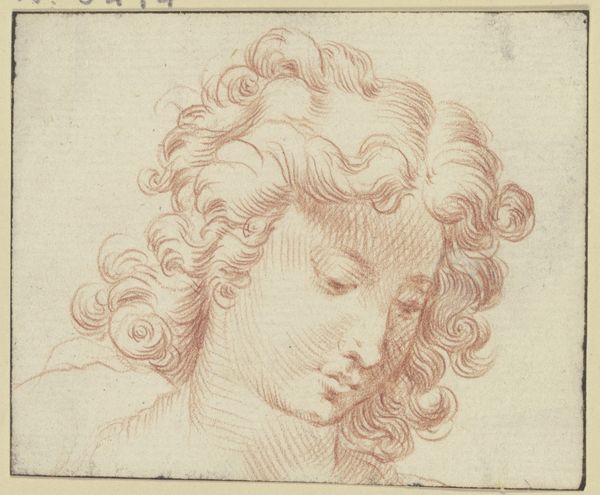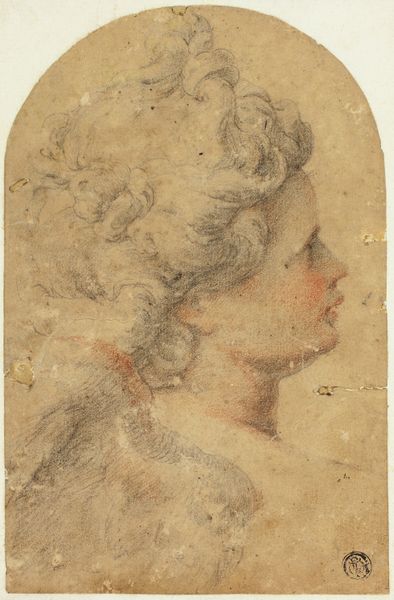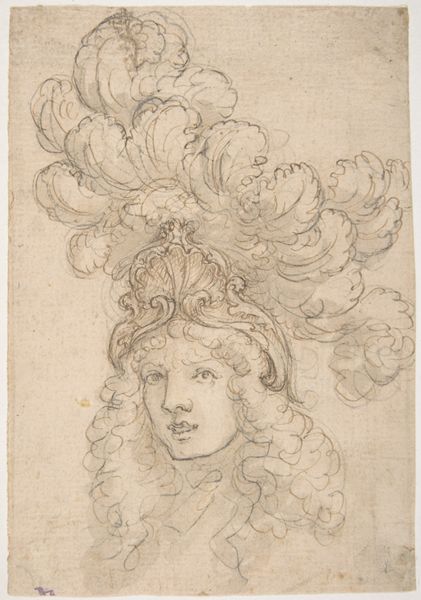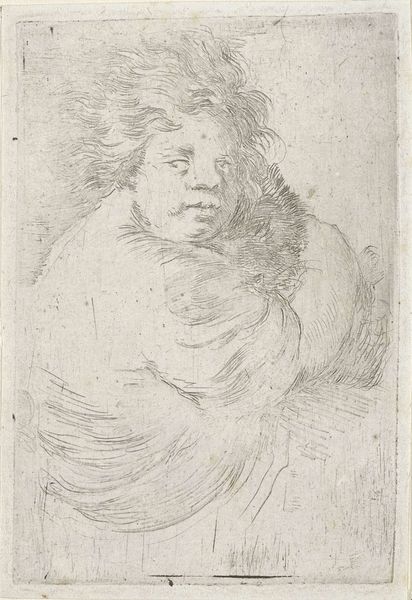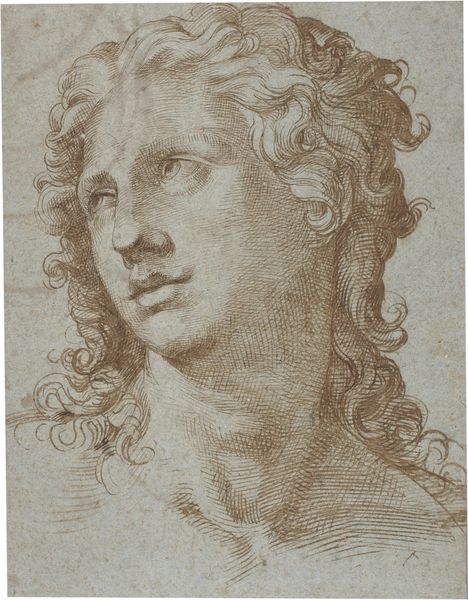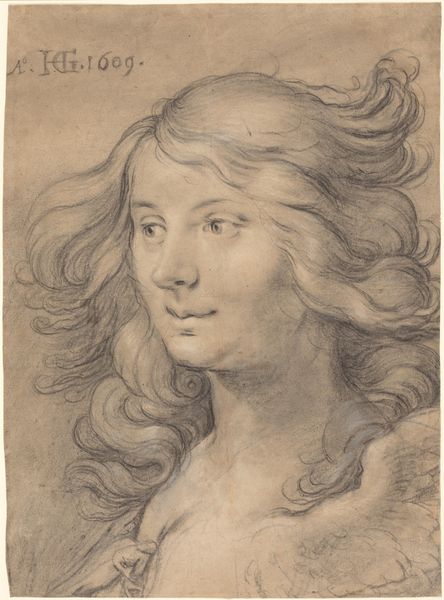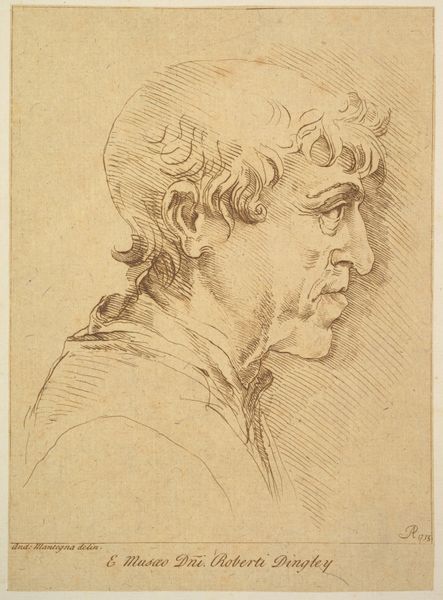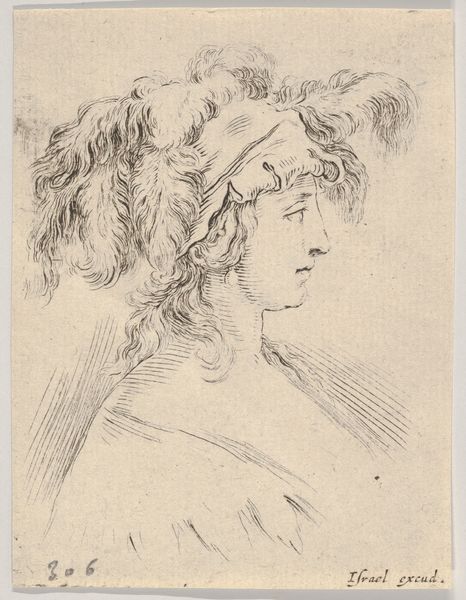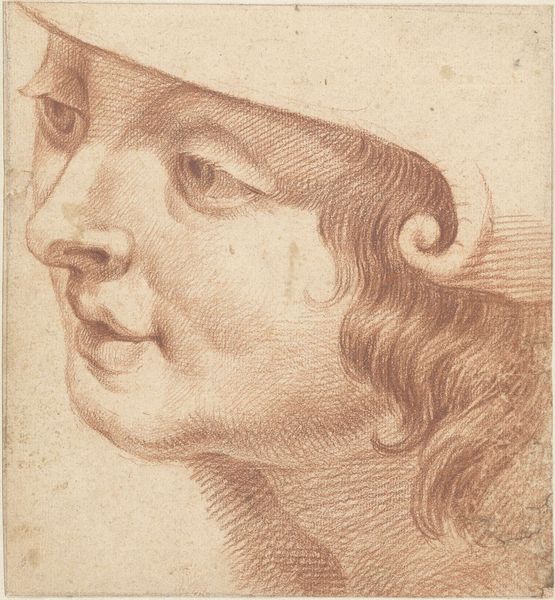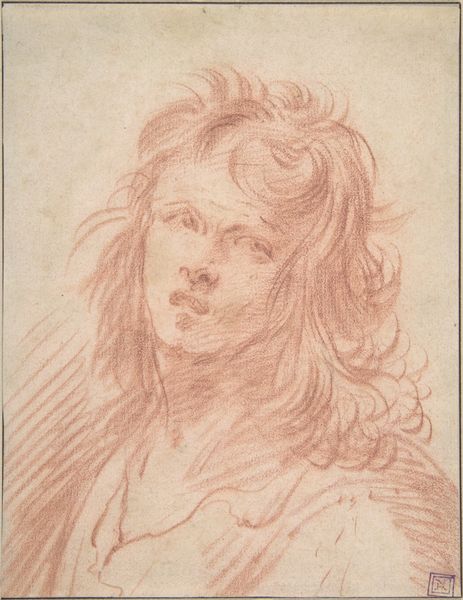
drawing, print, dry-media, pencil, charcoal
#
portrait
#
drawing
# print
#
pencil sketch
#
charcoal drawing
#
dry-media
#
pencil
#
charcoal
#
rococo
Dimensions: Sheet: 4 1/2 x 3 11/16 in. (11.4 x 9.3 cm)
Copyright: Public Domain
Curator: I’m struck by how fragile it looks; almost like a fading memory. Editor: That's an interesting take. Let's delve into this delicate piece, Young Man Wearing a Beret, a work rendered in pencil and charcoal. It is currently held in the collection of the Metropolitan Museum. The artist? François Boucher, active during the 18th century. Curator: Boucher really captures a certain lightness with his chosen materials. Notice the subject's upward gaze, and the casual tilt of the beret, all conveying a sense of hopeful anticipation, as if poised on the brink of something new. Berets often symbolized artistic inclinations during that period, didn't they? Editor: Absolutely. And from a material standpoint, using pencil and charcoal for a portrait like this speaks volumes about Boucher’s working method. He’s exploring texture, shadow, form, and the ease with which one could create images rapidly using these readily available media. This departs from more conventional portraits from the period rendered with paint or through other complex techniques. Curator: Indeed. This portrait lacks the formal rigidness associated with the painted Rococo portraits. We see vulnerability through the sfumato effect achieved with dry media. He almost seems like a shepherd or a character plucked from a pastoral scene, which were very popular during the Rococo period as representations of an idyllic simple life in the country, but that fantasy, as a symbolic retreat for the court, relies on a very unequal relation with rural folk… Editor: And you've nailed one aspect. This isn't just a pretty picture, right? Think about the accessibility of drawing materials in the 1700s. The image itself would've circulated differently because of the method. Is it a preparatory sketch, or a study of youth and class, all caught using humble, earthy materials? Was he preparing larger oil painting, or something else? Curator: I see the sitter more as a timeless figure, capturing fleeting youthful curiosity. His features and even attire transcend a specific era to mirror aspirations that are universally recognizable to everyone at any time. He stands for a desire for something better, maybe something just out of reach. Editor: It's intriguing how the artwork's materiality—the humble combination of pencil and charcoal—can lead to such expansive symbolic interpretations. The method, as a social indicator, highlights certain critical relations between labor and aspiration. Curator: I’ve always felt transported by the image, invited to dream along with the young man and to connect to his emotional landscape, something you remind us originates within concrete social structures. Editor: And thinking through those structures—materially, practically, historically—enriches the mystery of that face all the more.
Comments
No comments
Be the first to comment and join the conversation on the ultimate creative platform.

